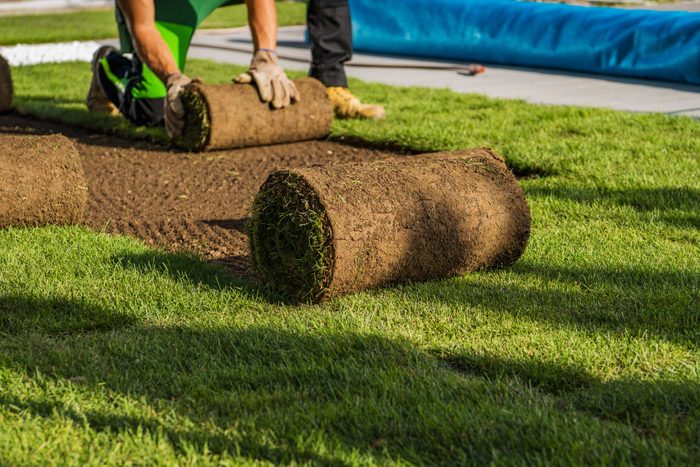When Should I Mow New Sod?
Updated: Feb. 02, 2024

New sod needs time to get established before you mow it. One or two weeks is typical, but the sod itself will tell you when it's ready.
One of my favorite landscaping jobs involves laying new sod. Sod bundles are heavy, so it’s not easy work. But when you unroll them onto the waiting soil, you can almost feel the roots reach deep into the ground for water and nutrients, and there’s a primordial satisfaction in that. Not to mention that, when you’re done, it transforms the entire yard.
Did I mention that laying sod is hard work? After you’re finished, the last thing you want is spoiling all your efforts by mowing too soon and damaging the grass.
On the other hand, you don’t want to wait too long. Instead of a beautiful carpet of green, you’ll have a patchwork quilt. The sooner you can mow, the sooner you can begin healing the joints between sod patches and grow an integrated lawn.
In most cases, it’s suitable to wait one to two weeks. But a lot depends on the weather, the quality of the topsoil and the time of year. Instead of adhering to a formula, let the lawn tell you when it’s ready for mowing. Here’s what to know.
On This Page
Why Is Mowing New Sod Different Than Mowing Established Sod or Other Grasses?
Like any other transplant, new sod needs time to get used to its new habitat. It’s fragile, and the roots need time to burrow. To help them get established quickly, sod needs lots of water — enough to make the ground soggy. And if you mow any type of grass when it’s that wet, you’re bound to get bad results.
Once you start mowing, you aren’t just trimming the grass blades — you’re healing and hiding the joints. To do this properly, pay attention to the direction you’re mowing. You won’t have to do this later on, but it’s important at the beginning.
When Is It OK To Mow New Sod?
Professional landscapers recommend after one to two weeks, and some even say five. The roots need time to penetrate the soil and tap into underground moisture.
When your new sod looks like it needs mowing, try gently lifting a piece near a joint or the edge of the lawn. If the roots penetrated the soil, the grass will be difficult to lift. If the sod lifts easily, hold off on mowing for now, continue watering and check again in a few days.
The Best Way To Mow New Sod
Even if it’s ready for mowing, you can damage new sod by using the wrong mower or mowing too short. Here are some pointers to keep new sod in top condition:
- Let the sod dry out: New sod needs lots of water. But once you’ve determined it’s ready for the first mowing, hold off on the watering for at least a day. This allows the blades to dry out and firm up the subsoil, preventing the wheels of your mower from bogging down.
- Use a lightweight mower the first few times: The wheels of a heavy mower will leave tracks that may be difficult to repair. Once the lawn is established, go ahead and use your riding mower.
- Sharpen your mower blade: A sharp blade cuts grass cleanly; a dull blade basically rips the tops off. With fragile grass, you want a clean cut.
- Set the height of the mower to its maximum: Cutting new sod too short reduces the amount of green material available for photosynthesis, leaving patches of brown and failing grass. A rule of thumb: Set the cutting height to remove no more that the top one-third of the blades.
- Mow in the same direction as you laid the sod: This helps heal the joints and prevents the edges from pulling up. Later, when the lawn is established, you can mow across the joints.
